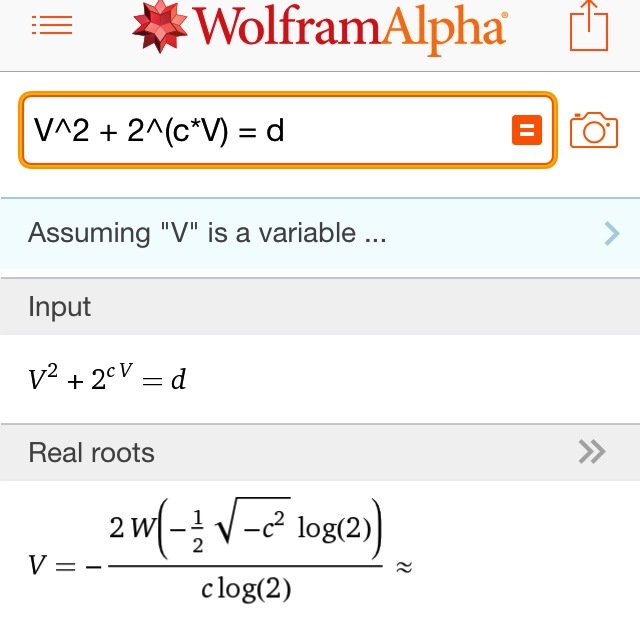zappedagain
Electrical
- Jul 19, 2005
- 1,074
Can anyone point me to the proper function/procedure to solve this equation for V?
V^2 + 2^(c*V) - d = 0 (so V is added and in an exponent at the same time).
Or am I going to need to approximate it? I'm a bit rusty on the math end.
Thanks,
Z
V^2 + 2^(c*V) - d = 0 (so V is added and in an exponent at the same time).
Or am I going to need to approximate it? I'm a bit rusty on the math end.
Thanks,
Z

